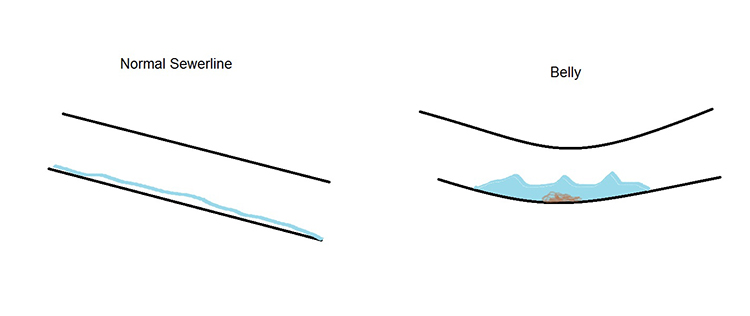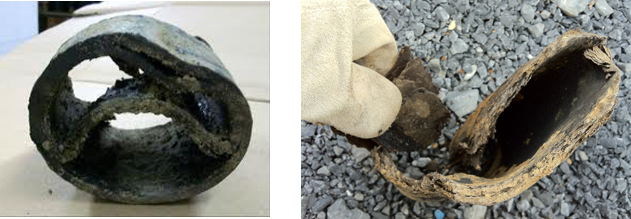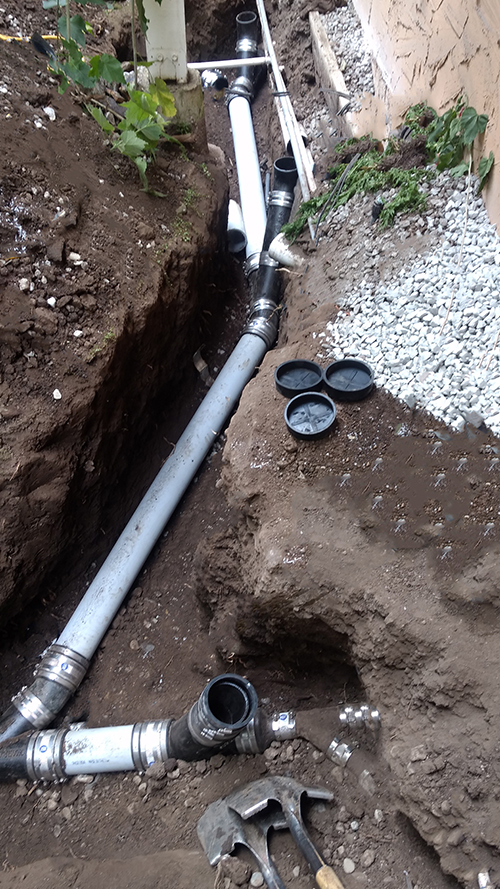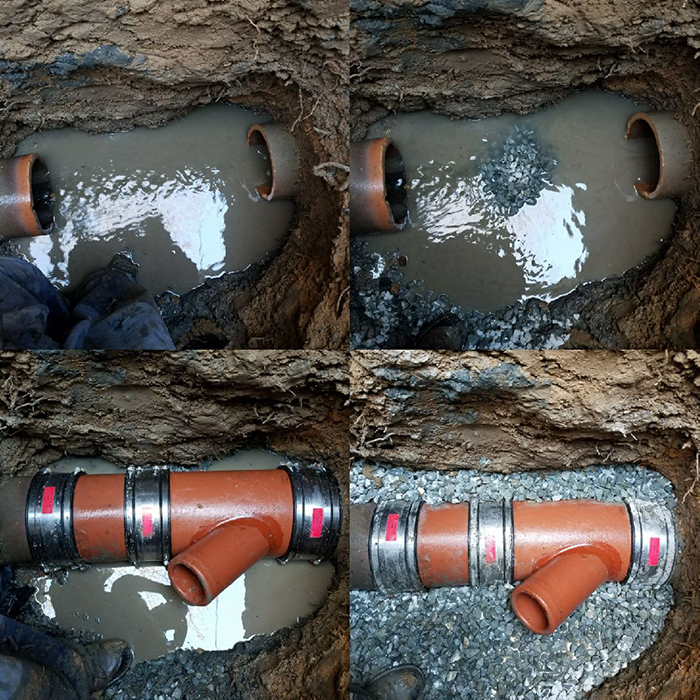Correcting a Back Pitch on a Side Sewer
Sewer line bellies are a common problem that can create aggravating sewer pipe problems for property owners. A sag in a sewer pipe will eventually lead to standing water and sediment collecting in the middle of the line, which in turn can lead to erosion, blockages, and a major backup for the homeowner.
What Is a Belly in a Sewer Pipe?
Sewer line bellies aresags orlow spots in sewer lines. A normal sewer lateral (seen below) has a slope that uses gravity to help regulate the flow. A bellied sewer line interferes with the normal flow of waste water through the pipe, leading to backups and other problems because the water and sediment collects in the belly.

What Causes Sewer Bellies?
Poor planning and bad installations are often the root cause of sewer line bellies, asproper bedding compaction,good materials andcorrect slope are the most important factors needed to prevent the problem. However, natural occurrences like major tree roots, earthquakes, sun or heat, rain, and even cold weather fluctuations can lead to the shifts in the soil that eventually cause bellies.

To prevent bellies, the first step is to install plumbing with proper bedding. If the correct material (larger grade gravel and sand) is not used under the pipe, then it may eventually settle lower into the ground in some sections and a belly will form.
A sewer line must also have the correct slope in order to use gravity to its advantage when moving waste away from the home or building. A trenchless professional will use the best tools of the trade (such as video cameras and locator wands) to ensure proper slope in a plumbing installation thereby preventing excess build-up.
In some cases, unstable ground may cause bellies, too. Even sewer lines that have been installed with the appropriate support in place may sag if the earth below begins to shift.
How Can You Diagnose the Problem?
Sewer pipe bellies should be diagnosed by plumbers using the most accurate video inspecting technology. A professional sewer camera inspection will allow the service technician to push a video camera through the pipe, giving you a close look at the entire sewer lateral and allowing the plumbing team to accurately identify the issue. Even slope issues can be detected at this preliminary stage of the process.
Sewer Belly vs. Channeling
Sometimes a problem may be misdiagnosed as a belly when the real issue is actuallysewer channeling. Channeling occurs when the pipe itself begins to buckle in sections due to erosion or a change in the weight on the pipe due to shifting earth. When a pipe buckles like this it can interrupt good flow and create more blockage and build up (see below).

Channeling is a common issue with a type of sewer line calledOrangeburg. Orangeburg pipe was used in some jurisdictions between about 1945 and 1972. The problem with this material is that it is primarily made of tar paper, so it had a tendency to buckle as it got older. After about 30 years, flattening and decay could lead to a channel. Fortunately for those of us in the Northern California, Orangeburg was more prominent in the eastern states—while newer developments here used mainly cast iron, clay and (later in the 60's and 70's) plastic.
How to Repair Bellied Sewer Pipes

Each case is different, so there is no magic correction technique when it comes to a belly in your sewer lateral.
While we are experts in the trenchless pipe bursting repair method, we do not always advise that a trenchless replacement be the solution for a belly rehab. Often, our team will usean open trench to approach the problem area in order to build and fill the ground underneath the sagging line. Once filled, we would strengthen and reinforce joints, fill in the remaining space, cover the area with the proper materials and compact to code.
Because it can be a lower cost solution to sewer repairs, trenchless pipe lining (CIPP) can be an option offered for some areas of pipe replacement—but this method will not correct the problem of bellies in the line. While Pipe Spy does not currently offer this option for service, we know that CIPP or "slip lining" can be a challenge to install as procurement of the proper permitting for this trenchless method in the East Bay is often denied. CIPP is typically only approved in extraordinary cases when there are no other (safer) alternatives. Chemicals used to cure the materials in the CIPP method can be toxic and harmful to both the wastewater system and local groundwater sources. CIPP extends the life of the existing sewer lateral by using the existing pipe for structural integrity. If that integrity is already eroded or compromised, lining it won't help solve the problem. So if your sewer professional is using this method, be sure to ask questions and check that the proper permits were received for the work.

Trust the Experts
If you're experiencing the symptoms of a sewer belly, or you've already confirmed the problem and need to find plumbers you can trust, contact our team. We are the East Bay's trusted experts in trenchless sewer line replacement, camera inspections, repair and maintenance, and more.
Contact our team to discuss your project and request more information.
Correcting a Back Pitch on a Side Sewer
Source: https://pipespy.com/blog/sewer-line-belly-causes-repair/
0 Response to "Correcting a Back Pitch on a Side Sewer"
Post a Comment